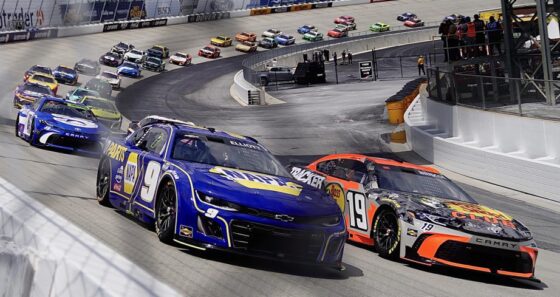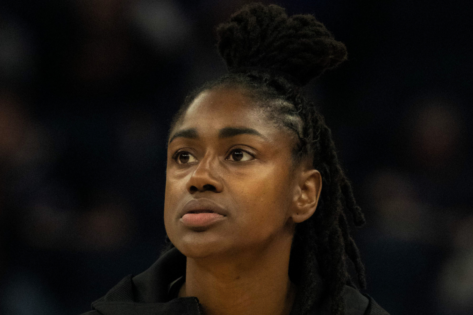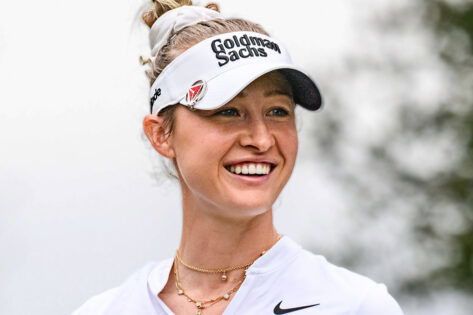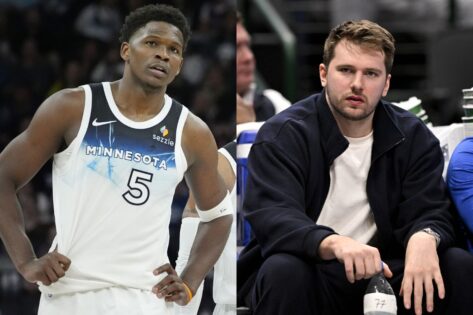There was a time when NASCAR stood shoulder to shoulder with America’s biggest sports leagues, and nowhere was that more evident than during the 2006 Daytona 500, which pulled in a whopping 19.4 million viewers. That was the sport’s modern golden era, a time when drivers like Dale Earnhardt Jr., Jeff Gordon, and Tony Stewart weren’t just tearing up the track; they were household names, fueling NASCAR’s rise to a cultural juggernaut. The Daytona 500 wasn’t just a race; it was a moment that glued fans to their screens, from small-town bars to big-city living rooms.
Fast forward to 2017, and the picture looked different. That year’s Daytona 500 drew less than 12 million viewers, a gut-punch drop that signaled trouble. The retirements of Gordon, Stewart, and eventually Dale Jr. left a gaping hole, not just in the starting lineup but in the sport’s connection with fans. By the time Dale Jr. ran his final Daytona 500, NASCAR’s grip on mainstream America was slipping. Attendance was down, TV ratings were tanking, and a sport that once roared toward the future was scrambling to hold its ground. Fans took to the internet to vent, and insiders pointed to a laundry list of issues: aging stars fading away, younger drivers struggling to fill those boots, and leadership wrestling with how to keep the sport relevant.
Now, in 2025, that backdrop of sagging viewership and fan frustration has set the stage for a young driver to step up and speak out. In a candid interview with The New York Times, Ty Gibbs doesn’t just nod to NASCAR’s popularity scare; he lays out a bold roadmap for what needs to change. From shaking up racetracks to shining a light on underdog stories, Gibbs is throwing down the gauntlet, challenging NASCAR to rethink its approach. His words aren’t just a wish list; they’re a call to action that could steer the sport back toward its glory days.
A Driver’s Vision for NASCAR’s Future
Ty Gibbs isn’t one to mince words, and in his New York Times interview, he tackled the big question head-on: “What needs to happen in NASCAR to take the sport to the next level of popularity?” His answers are a mix of sharp insight and no-nonsense ideas, pulling no punches about where the sport needs to step up.
He started by explaining, “We’re doing some good stuff as far as going to new places. I think there should be a raised stake for tracks; they should be competing just as much as teams and drivers. Especially this year, we’ve had so many great attendance numbers and people showing up. But when a track doesn’t, now there’s something wrong.” Gibbs is calling out racetracks that aren’t pulling their weight, pushing for real consequences when venues fail to pack the stands. Back in 2021, NASCAR had a rule on the books requiring tracks to hit at least 70 percent capacity or face losing their race dates. That kind of accountability seems to resonate with Gibbs’ point: tracks need to hustle as hard as drivers and teams to create buzzworthy race weekends. When venues like Road America stepped up and drew crowds, they earned their spot, while underperforming tracks have lost dates to newer markets. Gibbs’ push for competition among tracks is a reminder that fan turnout is the lifeblood of the sport, and venues can’t just coast on tradition.
He further said, “There should be competition there. If your track doesn’t hit a certain attendance threshold, you should lose the race, maybe next year, or in two years, depending on your contract. The tracks should be working just as hard to get fans there and create fun, creative weekends.” Gibbs doubles down here, emphasizing that tracks need to bring their A-game, just like the drivers battling for the checkered flag. He’s not wrong; tracks that innovate with fan festivals, concerts, or unique experiences tend to draw bigger crowds. His team, Joe Gibbs Racing, has seen the benefits of NASCAR’s in-season tournament format, where they’ve punched above their weight despite not being one of the sport’s “key partner” teams with massive budgets. This format has given smaller outfits a chance to shine, proving that competition breeds excitement. Gibbs’ call for tracks to face the same pressure feels like a natural extension of that mindset, pushing for a sport where everyone’s fighting to keep fans engaged.
Gibbs points out further, “Also, we need to do a better job of telling the stories of the teams who aren’t at the top right now. I’ve probably been the direct beneficiary of the in-season tournament. We’re not a ‘key partner team,’ but we’re beating some of them, teams that have twice the money, twice the people, and sometimes five times as many people.” Gibbs gets personal here, pointing to how the in-season tournament has leveled the playing field, letting drivers like him compete with the big dogs. His rise in 2025, despite limited resources compared to NASCAR’s powerhouse teams, shows how formats like this can spotlight fresh talent. The sport’s gotten tighter in recent years, with closer racing and more parity, and Gibbs’ success is proof that underdog stories can captivate fans. By giving airtime to drivers and teams outside the usual elite circle, NASCAR could tap into new narratives that draw in viewers hungry for something different.
He finally summed up saying, “… We have to not focus so much on the top guys. We’ve worn those stories to death, and those drivers and teams aren’t producing much more energy toward the sport. Maybe they’re exhausted from being up there, I don’t know. But there are a lot of people throughout the field who have stories to tell, and they should get more opportunities to show their personality.” Gibbs isn’t afraid to call out the sport’s obsession with its biggest names. The constant spotlight on perennial favorites has started to feel stale, and fans are craving fresh rivalries and personalities. NASCAR’s media partners like Fox, NBC, Amazon Prime, and Bleacher Report are now under pressure to mix things up, weaving in behind-the-scenes stories, candid interviews, and social media moments that let drivers like Gibbs show who they are off the track. His point hits home: the sport needs to spread the love, giving mid-pack drivers and underdog teams a chance to connect with fans and build new storylines that keep the sport vibrant.
The Heat of the Moment
While Gibbs is laying out a roadmap for NASCAR’s future, the sport’s present is buzzing with its drama. On this week’s Bringing the Heat podcast, Caleb Barnes sat down with Ty Dillon at Dover Motor Speedway to unpack his unique journey. Dillon opened up about his winding path to the Cup Series and how it’s reshaped his outlook. He’s been making waves in the In-Season Challenge, showing flashes of brilliance, but he’s candid about needing more consistency to close out 2025 strong. His story echoes Gibbs’ call for spotlighting underdog drivers. Dillon’s not a household name yet, but his grit and perspective are exactly the kind of narratives that could pull fans in.
They also dove into the week’s hottest topics, with NASCAR’s 2026 race at Naval Base Coronado in San Diego stealing the show. The announcement of a new temporary venue has fans and insiders buzzing about what a race at a naval base could look like. Think tight corners, unique vibes, and a fresh twist on NASCAR’s push for new markets. They also touched on the ongoing lawsuit between 23XI Racing and Front Row Motorsports against NASCAR, sparked by a mid-season rule change that seems to favor top open teams. It’s a messy situation, but it shows NASCAR’s willingness to shake things up, even if it ruffles feathers.
The soundbite of the week came from Chase Briscoe, who reflected on his battle at Dover, trying to chase a win while racing teammate Denny Hamlin clean. Barnes and Worsham debated whether this signals a return to respect among top drivers, a nod to the sport’s roots when rivalries were fierce but fair. Worsham also weighed in on the heated debate over NASCAR’s points format, sparked by controversial driver quotes, while Barnes aired his frustration with rumors about Iowa Speedway’s IndyCar turnout. It’s a reminder that NASCAR’s not just about racing. It’s about passion, debate, and a fanbase that lives for every twist and turn.
The post NASCAR Driver Speaks Out on NASCAR’s Popularity Scare, Issues Them a Roadmap appeared first on EssentiallySports.



